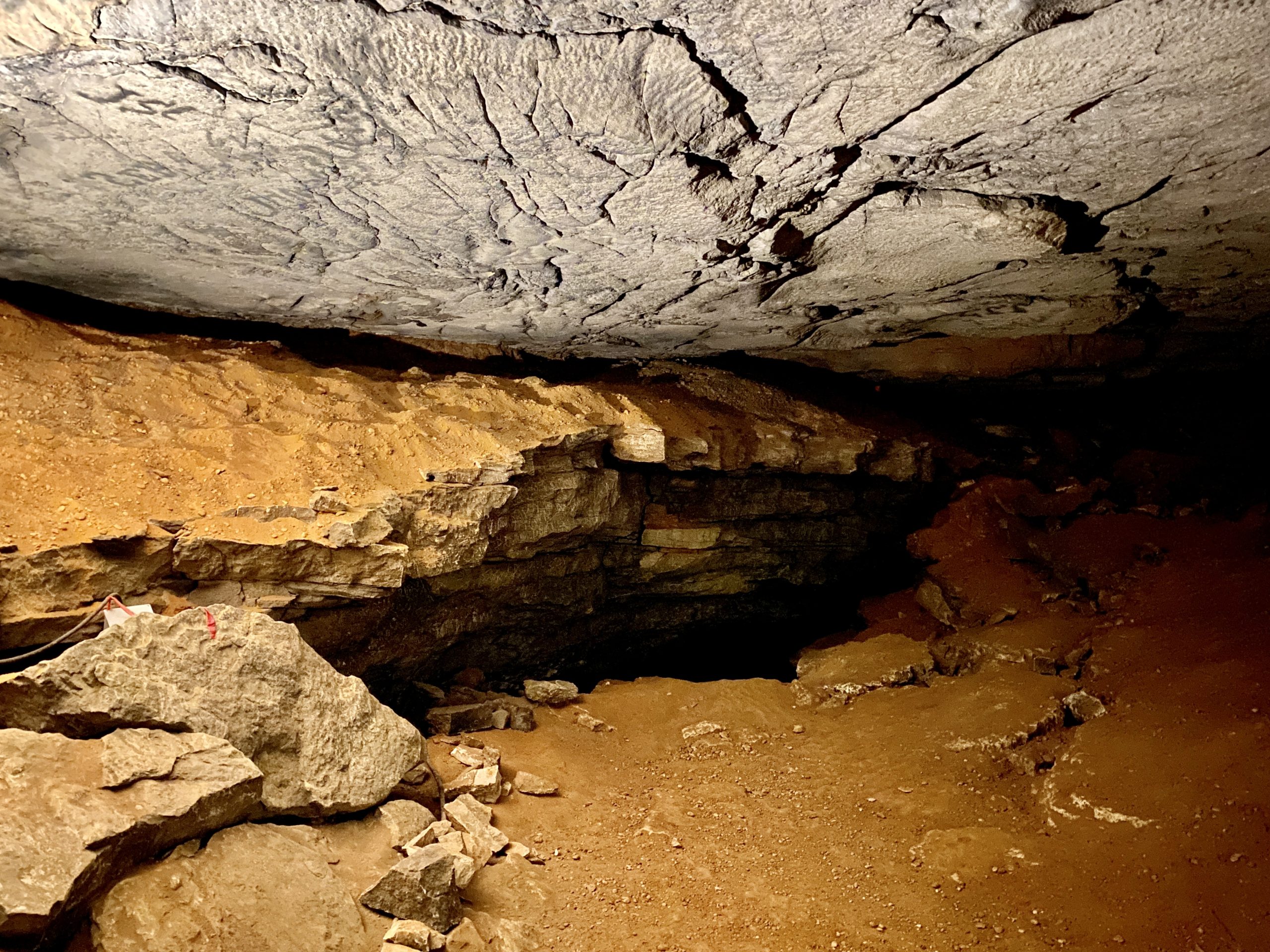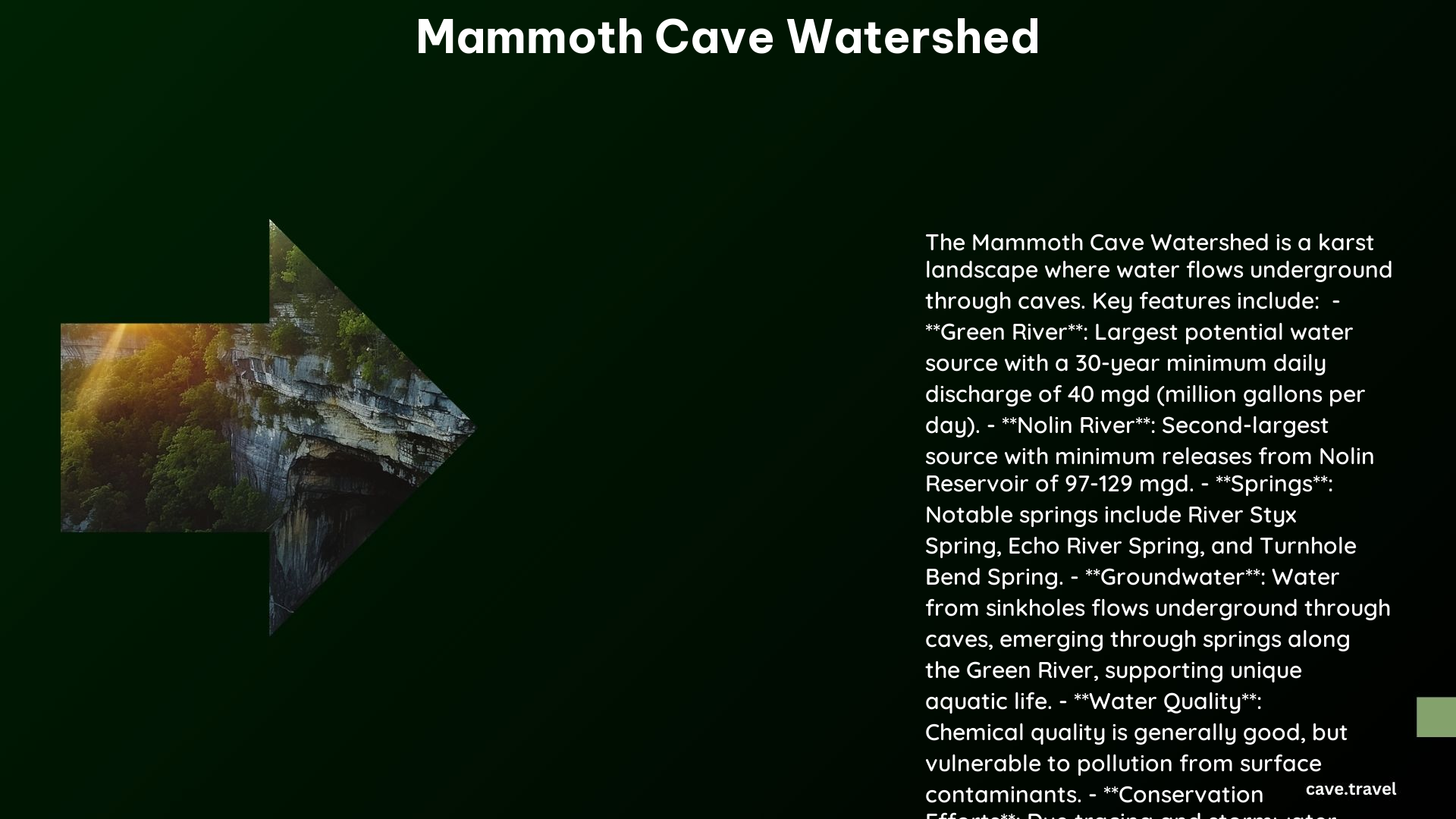The Mammoth Cave Watershed is a critical component of Mammoth Cave National Park, playing a significant role in the park’s hydrology and ecosystem. This unique karst landscape, characterized by underground water flows and cave systems, is the lifeblood of the park, supporting a diverse range of aquatic life and shaping the overall environment.
Significance of the Mammoth Cave Watershed

-
Hydrological Activity: The Mammoth Cave Watershed is a complex and fascinating system, with water flowing quickly into sinkholes and underground through the park’s extensive cave network. This karst topography makes the park’s hydrology unique and vulnerable to surface contaminants.
-
Water Flow and Ecosystem Support: The water flowing through the watershed supports a diverse range of aquatic life, including endangered species like the Kentucky cave shrimp. The cave ecosystem relies on the quality and quantity of this water, making it crucial to protect the watershed.
-
Interconnectedness of Ecosystems: The Mammoth Cave Watershed connects different ecosystems within the park, including rivers, streams, springs, and ponds. This interconnectedness supports a rich biodiversity, with many species relying on the water and its quality.
Impact on the Cave System and Ecosystem

-
Pollution Risks: The karst nature of the Mammoth Cave Watershed makes it vulnerable to pollution from surface activities, such as agricultural runoff, sewage, and chemicals. This can contaminate the groundwater and harm the delicate cave ecosystem.
-
Cave Passages and Springs: The water flowing through the watershed creates a network of underground streams and lakes, supporting a wide variety of aquatic life adapted to the cave environment. Any disruption to this water flow can have significant impacts on the cave ecosystem.
-
Ecosystem Interdependence: The Mammoth Cave Watershed is the foundation for the park’s diverse ecosystems, connecting surface and underground environments. The health of the watershed is crucial for maintaining the overall ecological balance within Mammoth Cave National Park.
Measures to Protect the Mammoth Cave Watershed
-
Dye Tracing: Park managers use dye tracing to track the flow of water through the cave system, helping to identify potential pollution sources and understand the hydrology of the area.
-
Stormwater Management: The park has implemented measures to manage stormwater runoff from parking lots and other areas, using filter systems to remove contaminants before they enter the cave system.
-
Conservation Efforts: The park is part of the Mammoth Cave Biosphere Region, which focuses on groundwater conservation and protecting the water quality. This involves collaboration with local communities, farmers, and conservationists to reduce pollution and preserve the watershed’s integrity.
Quantifiable Details
| Metric | Value |
|---|---|
| Minimum Daily Discharge of the Green River | 40 million gallons per day |
| Minimum Observed Flow of Springs on Flint Ridge | 121,700 gallons per day |
| Water Quality | Generally good, but concerns about potential pollution |
References
- National Park Service. (2024). Hydrological Activity – Mammoth Cave National Park. Retrieved from https://www.nps.gov/maca/learn/nature/hydrological-activity.htm
- National Park Service. (2007). Mammoth Cave NP: Master Plan (Park Resources and Their Use). Retrieved from https://www.nps.gov/parkhistory/online_books/maca/master_plan/sec2.htm
- U.S. Geological Survey. (1965). Present and Future Water Supply for Mammoth Cave National Park, Kentucky. Retrieved from https://pubs.usgs.gov/publication/wsp1475Q
- National Park Service. (2021). Waterways – Mammoth Cave National Park. Retrieved from https://www.nps.gov/maca/learn/nature/waterways.htm
- U.S. Geological Survey. (n.d.). Hydrology of Mammoth Cave National Park. Retrieved from https://www.usgs.gov/geology-and-ecology-of-national-parks/hydrology-mammoth-cave-national-park
